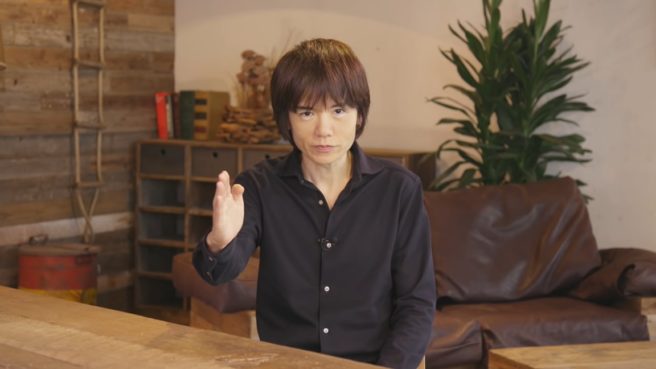Sakurai on staging characters for visual appeal, Min Min’s unique input methods in Smash Bros. Ultimate
In Masahiro Sakurai’s 609th column for Famitsu, the Super Smash Bros. director talked in-depth about the thought process behind staging characters for visual appeal. He also revealed the reason for switching up Min Min’s input methods in Smash Bros. Ultimate.
Check below for the column’s full translation by Nintendo Everything’s Oni Dino.
I don’t know how many players will notice this but, our newest DLC fighter, Min Min, throws her left arm with the A button, and her right arm with the B button. This means that the controls are opposite to the actual game, ARMS.
Usually the button on the right, the A button, controls the right hand, and the button on the left, the B button, controls the left hand. This was actually how we intended to implement it early on. So that means we intentionally changed the input method, right? I bet you curious to know why…
So, considering the majority of people are right-handed, fighters usually stand with their left foot forward. There are certainly exceptions to that rule, but let’s use boxing as an example: the left hand is used for jabs, which keep opponents in check. They’re short and quick, but you don’t have to fully exert yourself. The right is used for straights, which the fighter puts their full weight behind. Pulling back your dominant arm, bracing yourself with your feet, and twisting with your body—you can really deliver a devastating blow. …
To put it simply: the hand out front deals quick and accurate punches, while the hand close to your body does the real damage.
Min Min stands the same way in her idle stance: left foot forward. In doing this, the left hand goes forward, too. With our original plans, it didn’t look very appealing to have the left arm cycle out her different weaponry with the B button. It looked like a bobbing light coming off of an anglerfish! Even when removing the A and B button philosophy from the equation, having her hand out front be the one that switches weapons would make it quite awkward. We figured there’d be no harm in swapping the controls for the left and right arms since Smash Bros is on a 2D plane.
There are many other aspects we think about in this regard. For instance, we always consider whether the character will appear from stage left or stage right during a reveal trailer. This is more of a stage play thing, but stage left refers to the audience’s right, and stage right refers to the audience’s left. Fighters and allies essentially appear from stage right; their opponents typically appear from stage left. There’s a lot of intent and benefit to this principle, such as avoiding confusion when comping.
New fighters most often stand stage right. So if they were to have their right foot forward, then that would mean their back would be toward the camera. Thus, it’s much more visually appealing to have them stand with their left foot forward.
Cloud’s idle stance is actually opposite from his original game, too. In Final Fantasy VII, he stands facing stage right. The layout in the games all the way up to Final Fantasy VI had player characters standing stage left, so we designed his footing with this in mind, but thankfully they let us do it the opposite way. Tetsuya Nomura gave us the okay after we explained that it made sense from both a martial arts and a stage play perspective.
Speaking of, we have Marth holding his sword out front because we visualized fencing for him. His swordplay is focused on the reach of his piercing attacks, but we kept them to a minimum to retain gameplay readability. In contrast to this, Ike holds his sword back because he’s more of the power type.
There are just so many variations depending on the type of hand-to-hand combat; two-handed weaponry in particular doesn’t necessarily have any rules. And so concludes my talk today—this is but one of the many aspects we consider during development.
Translation provided by Oni Dino on behalf of Nintendo Everything.
If you use any of this translation, please be sure to source Nintendo Everything. Do not copy its full contents.
